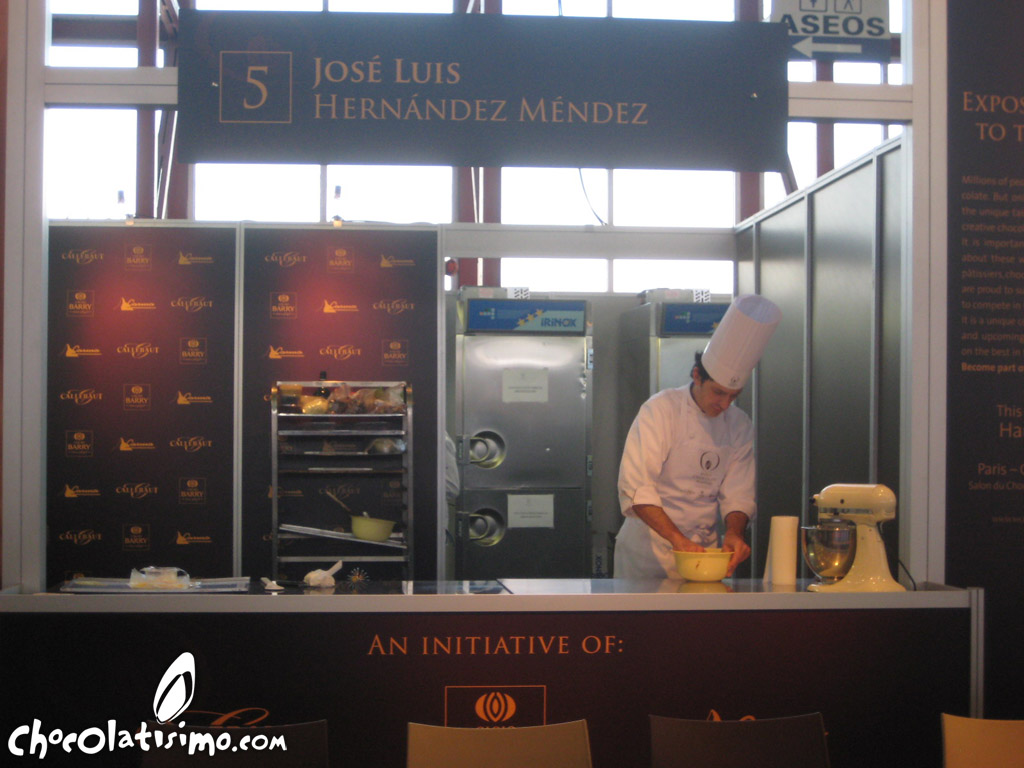Confectioners play a crucial and multifaceted role in the chocolate industry. They are the skilled artisans who transform chocolate into delightful creations that captivate our senses. From crafting intricate sculptures to creating delectable treats, their expertise and creativity shape the chocolate market and satisfy consumer preferences.
The importance of confectioners in the chocolate industry cannot be overstated. They are the driving force behind the innovation and creativity that keeps the industry vibrant. Confectioners continuously push the boundaries of traditional chocolate-making, developing new flavors, textures, and presentations that captivate chocolate enthusiasts.
One prominent example of the impact of confectioners is Hershey’s Chocolate World.This iconic attraction hosts the new Food Network primetime series “Chocolate Meltdown: Hershey’s After Dark”. Skilled pastry artists showcase their talent by molding chocolate and spinning sugar into gold, creating spectacular chocolate creations using Hershey’s sweets. This blend of artistry and confectionery expertise highlights the integral role that confectioners play in the chocolate world.
But what skills and expertise are required to be a successful chocolate confectioner? The answer lies in a combination of creativity, knowledge, and attention to detail. Confectioners must possess a deep understanding of chocolate making techniques and ingredients. They know the intricacies of working with different types of chocolate, including tempering, molding, and enrobing. Attention to detail is paramount, as precise measurements and temperature control are essential for achieving the desired texture and appearance of chocolate treats.
Creativity and innovation are at the heart of a successful confectioner’s skill set. They must continually come up with new and unique chocolate creations to entice consumers. By experimenting with different flavor combinations, ingredients, and techniques, confectioners create delightful taste experiences that leave a lasting impression.
One example of the creativity and innovation of confectioners is the incorporation of different textures and flavors in their chocolate creations. They skillfully combine smooth and creamy chocolate with crunchy nuts, chewy caramel, or tangy fruits to create a delightful sensory experience. This ability to balance and harmonize flavors and textures is what sets confectioners apart and makes their creations truly exceptional.
History of Chocolate Confectionery



The history of chocolate confectionery is a fascinating journey that spans centuries.Candy bars, which have become a staple in the confectionery world, have their origins in the chocolate rations given to European soldiers during World War I. These soldiers developed a taste for chocolate during the war and brought it back home, leading to the emergence of thousands of small confectioners in the 1920s to meet the growing demand for candy bars.
The popularity of candy bars soared as they became a form of marketing with unique names and flavors. Candy bars were named after popular expressions, pop culture icons, and dance crazes, capturing the attention of consumers. Otto Schnering of the Curtiss Candy Company was known for his marketing stunts and popularized the Baby Ruth bar.
During the Great Depression, candy bars took on a new role as cheap meal replacements. As people struggled with limited resources, candy bars provided a small indulgence and a momentary escape from the hardships of the time. The Depression and World War II led to consolidation in the candy bar industry, with larger manufacturers buying out smaller ones. Despite the challenges, confectioners continued to innovate and adapt, ensuring the survival and growth of the chocolate confectionery industry.
The impact of confectioners on the chocolate market and consumer preferences is profound. Through their creativity and innovation, confectioners shape chocolate trends and flavors. They introduce new and exciting chocolate products that capture the interest and imagination of consumers. Confectioners’ ability to create unique and high-quality chocolate offerings drives consumer choices and creates a demand for new and delightful chocolate experiences.
The Art of Confectionery
Confectionery is not just about making delicious treats; it is an art form that has been cherished for centuries. Confectioners are the artists who master the techniques and skills required to create sweet food items rich in sugar and carbohydrates.
Bakers’ confectionery is one aspect of this art form, which includes sweet pastries, cakes, and other baked goods. These creations require precision in measurements, baking times, and decorating techniques to achieve the desired texture, flavor, and appearance. From delicate pastries to intricate wedding cakes, bakers’ confectionery delights our taste buds and adds a touch of sweetness to life’s special moments.
Sugar confectionery is another facet of the confectionery world, encompassing candies, chocolates, chewing gum, and other confections made primarily of sugar. Confectioners in this field work with different types of sugar, flavorings, and ingredients to create a wide variety of treats. They employ various techniques such as melting, tempering, molding, and enrobing to transform sugar into delightful confections that bring joy to our lives.
Confections hold a significant cultural role in hospitality, celebrations, and tourism. From offering sweets to guests as a gesture of welcome to creating elaborate candy buffets at weddings and events, confections are an integral part of our social fabric. They mark important milestones, evoke cherished memories, and bring people together in celebration. Confectioners not only create delicious treats but also contribute to the overall experience and atmosphere of various events and occasions.
Skills and Expertise of Chocolate Confectioners



Being a successful chocolate confectioner requires a combination of skills, knowledge, and expertise. Confectioners are the masters of their craft, continually honing their skills to create exceptional chocolate creations.
Creativity and innovation are at the core of a confectioner’s skill set. They must have the ability to think outside the box and come up with unique ideas that set their creations apart. By experimenting with different flavors, textures, and ingredients, confectioners create extraordinary taste experiences that leave a lasting impression on consumers.
Knowledge of chocolate making techniques and ingredients is crucial for success in the chocolate confectionery industry. Confectioners understand the intricacies of working with different types of chocolate, including tempering, molding, and decorating. They know how to achieve the desired texture, shine, and snap in their chocolate creations.
Attention to detail is paramount in the world of chocolate confectionery. Precise measurements and temperature control are essential for achieving consistent results. Confectioners meticulously follow recipes and techniques, ensuring that each chocolate creation is of the highest quality.
Understanding flavor combinations is another important aspect of a confectioner’s expertise. They know how to balance flavors and create harmonious taste profiles that tantalize the taste buds. By experimenting with different ingredients and incorporating unique flavor combinations, confectioners create extraordinary chocolate creations that surprise and delight.
One example of the skills and expertise of chocolate confectioners is their ability to temper chocolate. Tempering is a critical process that involves heating and cooling chocolate to specific temperatures to achieve the desired texture and appearance. Confectioners carefully control the temperature of the chocolate, ensuring that it has a glossy finish, a satisfying snap, and a smooth mouthfeel. This attention to detail and precision in the chocolate-making process is what sets confectioners apart and allows them to create exceptional chocolate creations.
Creating Unique and Delicious Chocolate Creations
Confectioners have the remarkable ability to transform chocolate into unique and delicious creations that tantalize our taste buds. They use their skills and expertise to craft visually stunning treats that captivate our eyes and delight our palates.
One technique commonly employed by confectioners is molding chocolate. By pouring melted chocolate into molds and allowing it to set, confectioners can create intricate shapes and designs. From delicate flowers to elegant truffles, molded chocolates are a testament to the artistry and precision of confectioners.
Another technique used by confectioners is spinning sugar into delicate decorations. By carefully heating and manipulating sugar, they can create intricate sugar sculptures that add a touch of elegance to their chocolate creations. These spun sugar decorations, often seen on top of cakes and pastries, require skill and finesse to achieve the desired results.
Creating unique chocolate creations comes with its challenges. Confectioners must consider factors such as texture, flavor balance, and presentation. They strive to create a balance of flavors, incorporating elements like nuts, fruits, and spices to add depth and complexity to their creations. The combination of different textures, such as smooth chocolate paired with crunchy nuts or chewy caramel, creates a delightful sensory experience that keeps consumers coming back for more.
One example of a unique and delicious chocolate creation is the chocolate truffle. Confectioners skillfully blend chocolate, cream, and other ingredients to create a luxurious, melt-in-your-mouth treat. These truffles are often rolled in cocoa powder or coated with chocolate and beautifully decorated. Each bite reveals a rich and intense chocolate flavor, making them an indulgent delight.
The impact of confectioners on the chocolate market is significant. They influence consumer preferences by shaping chocolate trends and flavors. Through their creativity and innovation, confectioners introduce new and exciting chocolate products to the market. They are the tastemakers, driving consumer choices and creating a demand for unique and high-quality chocolate offerings.
Impact of Confectioners on the Chocolate Market
Confectioners play a vital role in shaping the chocolate market and satisfying consumer preferences. Their creativity and expertise have a profound impact on the industry, influencing the flavors and styles of chocolate that consumers seek.
One way confectioners influence consumer preferences is through the introduction of new and innovative chocolate products. They continuously develop unique flavors, textures, and presentations that captivate the taste buds and capture the imagination. By offering a wide variety of chocolate options, confectioners cater to the diverse tastes and preferences of consumers.
Confectioners are the driving force behind the growth and expansion of the chocolate market. Their ability to create new and exciting chocolate products fuels consumer interest and drives sales. The introduction of innovative chocolate creations creates a sense of excitement and curiosity, encouraging consumers to explore and indulge in the world of chocolate.
The impact of confectioners on the chocolate market extends beyond individual creations. They shape the overall landscape of the industry by driving consumer choices and creating a demand for unique and high-quality chocolate offerings. Through their creativity and expertise, confectioners set trends that influence the entire chocolate market.
One example of the impact of confectioners on the chocolate market is the rise of artisanal chocolate. Confectioners have played a key role in popularizing the concept of handmade, high-quality chocolates. These artisanal chocolates often feature unique flavors, premium ingredients, and exquisite craftsmanship. By offering an alternative to mass-produced chocolates, confectioners have created a niche market that caters to discerning chocolate enthusiasts.
Success of Hershey’s Chocolate Company
Hershey’s Chocolate Company is an iconic name in the world of chocolate confectionery. Its success story is a testament to the vision and dedication of its founder, Milton Hershey.
Milton Hershey’s journey in the candy-making industry began with humble beginnings. After completing an apprenticeship with a confectioner, he embarked on several business ventures that ultimately led to the founding of Hershey’s Chocolate Company.His determination and perseverance paid off when he developed a famous milk chocolate recipe that would become the foundation of his chocolate empire.
Hershey’s Chocolate Company introduced several popular chocolate products that have become household names. Hershey’s Kisses, with their distinctive shape and foil wrapping, quickly became a beloved treat. These bite-sized chocolates have been a part of celebrations and everyday indulgences for over a century.
In addition to Hershey’s Kisses, the company introduced other innovative chocolate creations that delighted chocolate lovers. Mr. Goodbar, introduced in 1925, combined milk chocolate with crunchy peanuts, creating a classic combination that remains popular to this day. Krackel, introduced in 1938, featured crisped rice enrobed in Hershey’s chocolate, adding a delightful crunch to the smooth texture of the chocolate.
Hershey’s Chocolate Company has also forged strategic partnerships to further its success. One notable collaboration was with Reese’s, which brought the iconic Reese’s Peanut Butter Cups into the Hershey’s family. This partnership not only expanded the company’s product line but also increased its market presence.
The success of Hershey’s Chocolate Company can be attributed to its commitment to quality, innovation, and meeting the evolving demands of consumers. From its humble beginnings to its status as a global chocolate powerhouse, the company’s legacy is a testament to the vision and passion of its confectioners.
Role of Confectioners in the Chocolate Industry Today
Confectioners continue to play a vital role in the modern chocolate industry. Their expertise, creativity, and dedication ensure that the industry remains dynamic and continually evolves to meet the expectations of consumers.
- Creation of New Flavors and Experiences:
- At the forefront of developing unique chocolate creations.
- Experimenting with different ingredients, flavor combinations, and techniques.
- Pushing the boundaries of traditional chocolate-making.
- Offering new and exciting options to consumers.
- Driving Innovation and Experimentation:
- Introducing new techniques, ingredients, and equipment.
- Using alternative sweeteners and incorporating unique flavors.
- Exploring new possibilities to create extraordinary chocolate creations.
- Development of Unique and High-Quality Chocolate Products:
- Striving to create treats that provide a memorable sensory experience.
- Combining different textures, flavors, and visual elements.
- Creating chocolate creations that are a feast for both the taste buds and the eyes.
- Rise of Bean-to-Bar Chocolate Makers:
- Deeply involved in every step of the chocolate-making process.
- Focusing on sustainability, fair trade practices, and showcasing unique flavors of the cacao beans.
- Gaining a loyal following for their craftsmanship and attention to detail.
- Dedication to Quality and Industry Development:
- Contributing to the development of the chocolate industry as a whole.
- Inspiring other chocolate makers and setting industry standards.
- Driving consumer expectations and ensuring a dynamic, vibrant chocolate industry filled with delightful offerings.
Challenges and Innovations in Chocolate Confectionery
The world of chocolate confectionery is not without its challenges. Confectioners face obstacles that require creative solutions and continuous innovation to overcome.
One challenge faced by chocolate confectioners is sourcing high-quality ingredients. The quality of chocolate heavily relies on the quality of the cacao beans and other ingredients used. Confectioners must navigate the complexities of the global supply chain to ensure they have access to the finest ingredients available. This often involves establishing direct relationships with cacao farmers and supporting sustainable farming practices.
Managing production costs is another challenge for confectioners. The price of quality ingredients, equipment, and other production expenses can significantly impact the cost of producing chocolate. Confectioners must find ways to balance the need for high-quality ingredients with the need to maintain competitive pricing. This often requires careful planning, efficient production processes, and strategic sourcing of materials.
Innovation is key to overcoming these challenges and driving the chocolate confectionery industry forward. Confectioners continually seek out new techniques and ingredients to enhance their chocolate-making processes. They explore alternative sweeteners, such as natural substitutes or sugar alternatives, to cater to changing consumer preferences. By embracing innovative solutions, confectioners can improve the quality and variety of their chocolate offerings while managing production costs.
Another area of innovation in chocolate confectionery is the incorporation of unique flavors. Confectioners experiment with different ingredients, such as spices, herbs, and exotic fruits, to create tantalizing taste experiences. They draw inspiration from diverse culinary traditions and cultural influences to develop flavor profiles that surprise and delight consumers.
The use of technology also plays a role in driving innovation in chocolate confectionery. Confectioners adopt new techniques and equipment to enhance the chocolate-making process. From advanced tempering machines to precise molding tools, these technological advancements help confectioners create high-quality chocolates with greater efficiency and consistency.
Adapting to changing consumer demands while maintaining quality standards is a constant challenge for confectioners. They must stay attuned to market trends and consumer preferences to ensure their chocolate creations remain relevant. This requires continuous learning, market research, and a willingness to experiment with new ideas to meet evolving consumer expectations.
The Future of Chocolate Confectionery
The future of chocolate confectionery holds exciting possibilities, driven by the passion and creativity of confectioners. As consumer preferences and global trends continue to evolve, confectioners are poised to shape the future of the industry.
One potential future development in chocolate confectionery is the increasing focus on sustainable sourcing and production methods. Consumers are becoming more conscious of the environmental and social impact of their choices, and this extends to their chocolate consumption. Confectioners are exploring sustainable farming practices, fair trade partnerships, and eco-friendly packaging options to meet the growing demand for ethically sourced and environmentally friendly chocolate products.
Advancements in technology will also play a significant role in shaping the future of chocolate confectionery. From improved manufacturing processes to innovative packaging solutions, confectioners will leverage technology to enhance the quality and appeal of their products. This includes exploring automation, robotics, and digital tools that streamline production and improve efficiency.
The demand for healthier chocolate options is expected to continue growing. Consumers are becoming more health-conscious and seek chocolate products that align with their preferences for natural ingredients, lower sugar content, and reduced environmental impact. Confectioners will continue to explore innovative recipes, alternative sweeteners, and functional ingredients to meet this demand.
The role of confectioners in driving industry trends and meeting consumer expectations will remain crucial in the future of chocolate confectionery. Their creativity, expertise, and commitment to quality ensure that the industry continues to evolve and satisfy the desires of chocolate lovers worldwide.
Conclusion
In conclusion, confectioners play an indispensable role in the chocolate world. Their skills, expertise, and creativity shape the chocolate market and influence consumer preferences. From crafting visually stunning chocolate creations to developing new flavors and experiences, confectioners are the driving force behind the innovation and excitement in the industry.
The history of chocolate confectionery highlights the significant impact of confectioners throughout the years. From the origins of candy bars to the success of companies like Hershey’s Chocolate Company, confectioners have left an indelible mark on the industry. Their ability to adapt to changing circumstances, create unique and delicious chocolate creations, and meet the evolving demands of consumers has ensured the growth and longevity of the chocolate confectionery industry.
The future of chocolate confectionery holds exciting possibilities. From sustainable sourcing and production methods to advancements in technology, confectioners are well-positioned to shape the industry’s future. Their dedication to quality, innovation, and meeting consumer expectations will continue to drive the industry forward, ensuring that chocolate lovers around the world can indulge in extraordinary chocolate creations for years to come.

